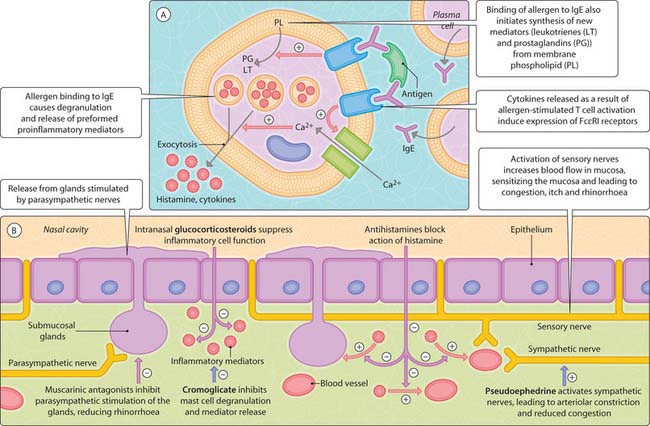23 Respiratory system
rhinitis
Rhinitis is a common and debilitating disease characterized by rhinorrhoea, sneezing, itching nasal congestion and obstruction. Allergic rhinitis is a common form of this disease, and symptoms arise following acute exposure to allergen, which binds to cell surface-bound IgE on mast cells and triggers their degranulation and release of inflammatory mediators such as histamine, tryptase, cysteinyl-leukotrienes and cytokines. This acute response triggers symptoms of itching, sneezing, rhinorrhoea and nasal congestion (Fig. 3.23.1). A delayed recruitment of lymphocytes and eosinophils to the nasal mucosa, and the mediators released from these cells, is also thought to contribute towards these symptoms, although nasal congestion and obstruction predominate. Non-allergic rhinitis is not caused by an airborne allergen and symptoms might be triggered by viral infection, hormonal imbalance or vasomotor, occupational or drug causes. Allergy avoidance can minimize the symptoms of allergic rhinitis but this has many disadvantages as it requires a change in lifestyle, which is impracticable for many. There area number of pharmacological approaches for the treatment of allergic rhinitis (Fig. 3.23.1B).

Fig. 3.23.1 Allergic rhinitis. (A) Formation of inflammatory mediators; (B) reactions in the nasal passages.
Pharmacological treatments
< div class='tao-gold-member'>
Stay updated, free articles. Join our Telegram channel

Full access? Get Clinical Tree




